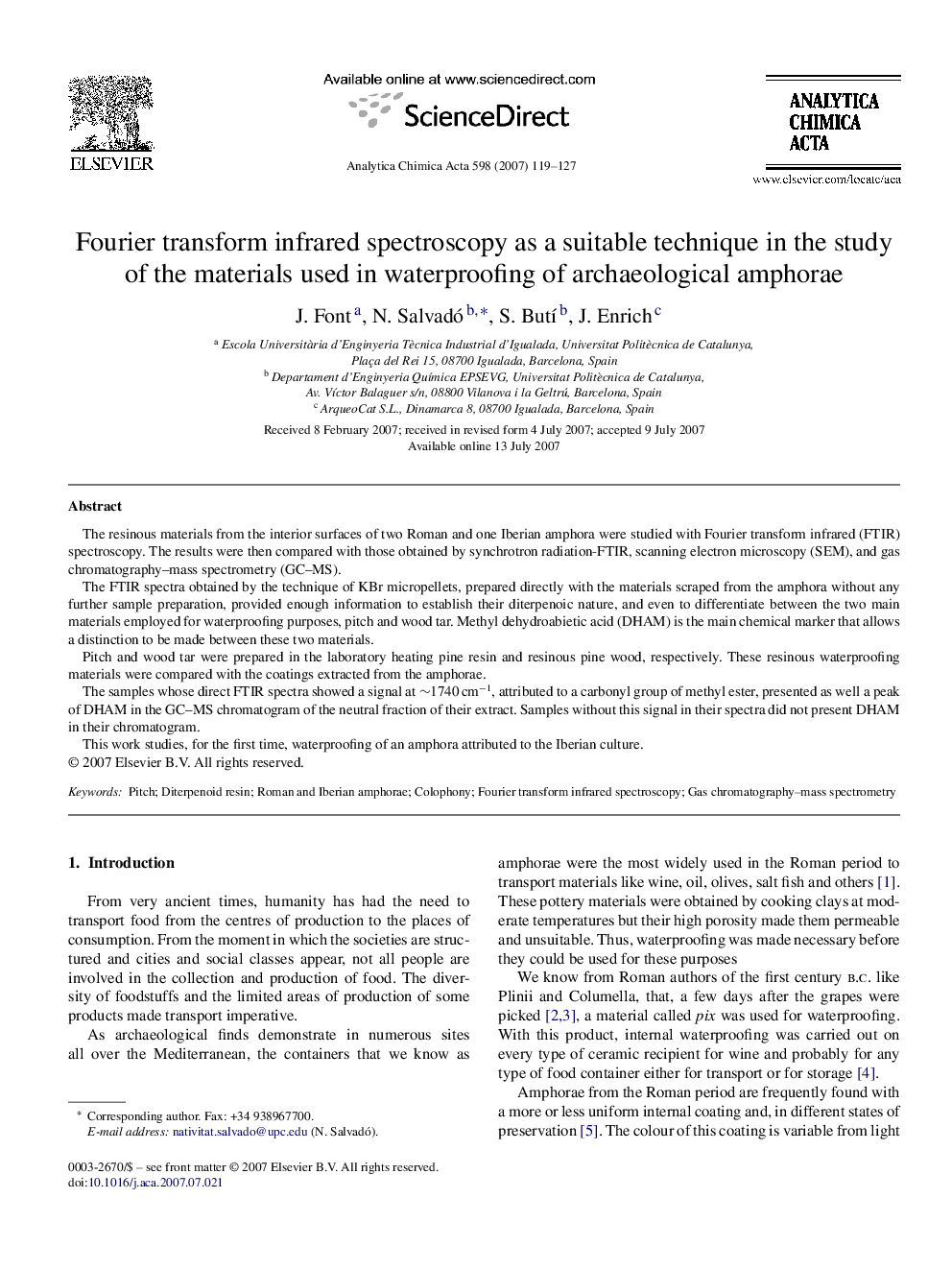| Article ID | Journal | Published Year | Pages | File Type |
|---|---|---|---|---|
| 1170098 | Analytica Chimica Acta | 2007 | 9 Pages |
The resinous materials from the interior surfaces of two Roman and one Iberian amphora were studied with Fourier transform infrared (FTIR) spectroscopy. The results were then compared with those obtained by synchrotron radiation-FTIR, scanning electron microscopy (SEM), and gas chromatography–mass spectrometry (GC–MS).The FTIR spectra obtained by the technique of KBr micropellets, prepared directly with the materials scraped from the amphora without any further sample preparation, provided enough information to establish their diterpenoic nature, and even to differentiate between the two main materials employed for waterproofing purposes, pitch and wood tar. Methyl dehydroabietic acid (DHAM) is the main chemical marker that allows a distinction to be made between these two materials.Pitch and wood tar were prepared in the laboratory heating pine resin and resinous pine wood, respectively. These resinous waterproofing materials were compared with the coatings extracted from the amphorae.The samples whose direct FTIR spectra showed a signal at ∼1740 cm−1, attributed to a carbonyl group of methyl ester, presented as well a peak of DHAM in the GC–MS chromatogram of the neutral fraction of their extract. Samples without this signal in their spectra did not present DHAM in their chromatogram.This work studies, for the first time, waterproofing of an amphora attributed to the Iberian culture.
